![]()
![]()
![]()
Use LEFT and RIGHT arrow keys to navigate between flashcards;
Use UP and DOWN arrow keys to flip the card;
H to show hint;
A reads text to speech;
10 Cards in this Set
- Front
- Back
|
200 C.E. to 1750 C.E. |
3-1. Nationalistagendasand disciplinary divisions based on the predominantlanguage (Greek, Latin, or Arabic) and religion (Judaism,Western or Eastern Orthodox Christianity, orIslam) have caused considerable fragmentation inthe study of medieval art. 3-2. Medievalart derived from the requirements of worship (Jewish,Christian, or Islamic), elite or court culture, and learning. |
|
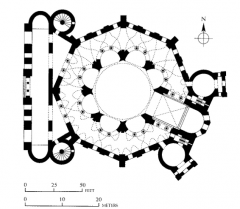
|
51. San Vitale. Plan. Ravenna,Italy. Early Byzantine Europe. c. 526–547 C.E. |
|

|
51. San Vitale. Ravenna,Italy. Early Byzantine Europe. c. 526–547 C.E. Brick, marble, and stone veneer. |
|
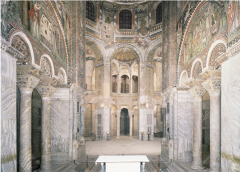
|
51. San Vitale. Ravenna,Italy. Early Byzantine Europe. c. 526–547 C.E. Mosaic. |
|

|
51. San Vitale. Justinian Panel. Ravenna,Italy. Early Byzantine Europe. c. 526–547 C.E. Mosaic. |
|
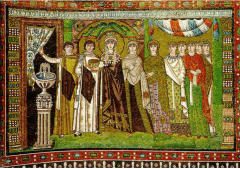
|
51. San Vitale. Theodora Panel. Ravenna,Italy. Early Byzantine Europe. c. 526–547 C.E. Mosaic. |
|
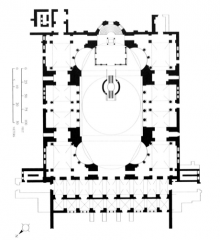
|
52. HagiaSophia. Plan. Constantinople. Anthemius of Tralles and Isidorus ofMiletus. 532–537 C.E. |
|
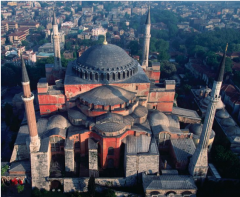
|
52. HagiaSophia. Constantinople (Istanbul). Anthemius of Tralles and Isidorus ofMiletus. 532–537 C.E. Brick and ceramic elements with stone and mosaic veneer. |
|
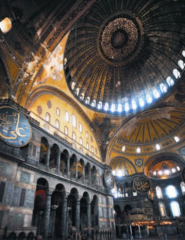
|
52. HagiaSophia. Constantinople (Istanbul). Anthemius of Tralles and Isidorus ofMiletus. 532–537 C.E. Brick and ceramic elements with stone and mosaic veneer. |
|
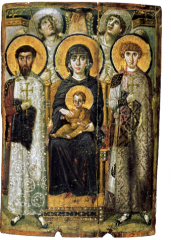
|
54. Virgin (Theotokos)and Child between Saints Theodore and George. EarlyByzantine Europe. Sixth or early seventh century C.E. Encaustic on wood. |

